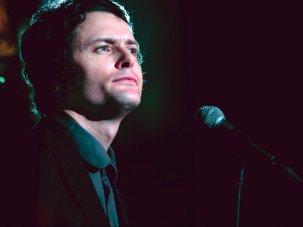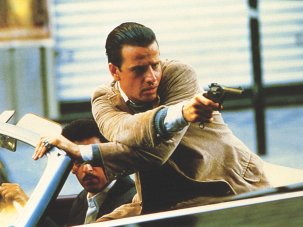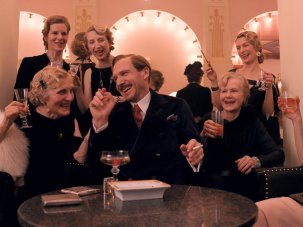Web exclusive
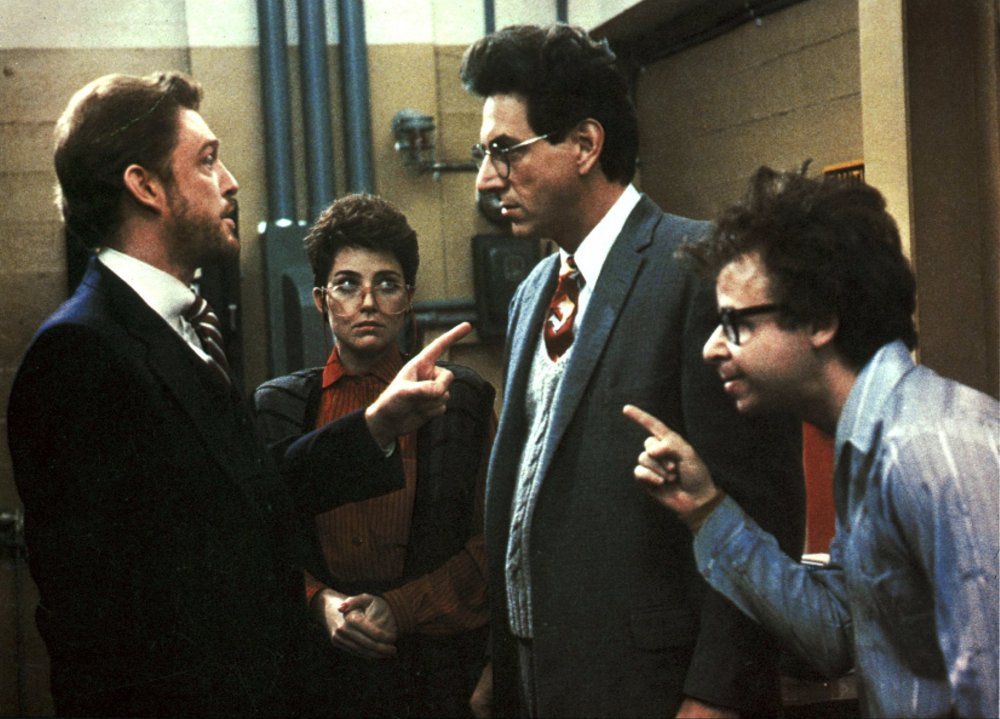
Straight man: Ramis, centre, as Egon Spengler in Ghostbusters (1984), which he co-wrote
“Dying is easy, comedy is hard,” Edmund Kean declared on his deathbed, a false dichotomy in the cinema of Harold Ramis, which regularly identifies the funny in the tragic and vice versa, even if in some of his more spectacular misfires (and there were several) you can certainly see what Kean was getting at. There is nothing more laborious than a comedy that doesn’t come off, and in Club Paradise (1986), Stuart Saves His Family (1995) and Year One (2009), Ramis put his name on a trio of critically reviled commercial flops.
But there were many more hits than misses in a showbiz career that lasted four decades, straddled performing, writing, producing and directing, and which included at least two movies that are considered game-changers (National Lampoon’s Animal House (1978), which he co-wrote, and Ghostbusters (1984), which he co-wrote and costarred in). And then there is Groundhog Day (1993), an effortlessly brilliant and endlessly fascinating movie, probably the most profound US comedy of the last quarter century, which Ramis directed, co-wrote and produced.
Born in Chicago in 1944, Ramis worked as a substitute teacher and as a caregiver in a mental institution (“Great preparation for working with actors,” he half-joked), and claimed to have avoided the draft by taking meth-amphetamines before his physical. He was an alumnus of Chicago’s Second City comedy improv group, which in Ramis’s era boasted the talents of Dan Aykroyd, Bill Murray, Eugene Levy and John Belushi (for whom Ramis acted as straight man).
Belushi brought him to New York to collaborate on The National Lampoon Radio Hour, and for two seasons Ramis was head writer and a performer on SCTV, the influential Canadian sketch show that grew out of Second City’s Toronto club, and which introduced John Candy, Rick Moranis, Martin Short and Catherine O’Hara to a wider audience. Turning down an offer from the other epochal comedy show, Saturday Night Live, Ramis was among the first of his generation to make it in Hollywood. In 1978 the bawdy frat house comedy Animal House grossed over $70 million in the US alone (against a budget under $3 million).
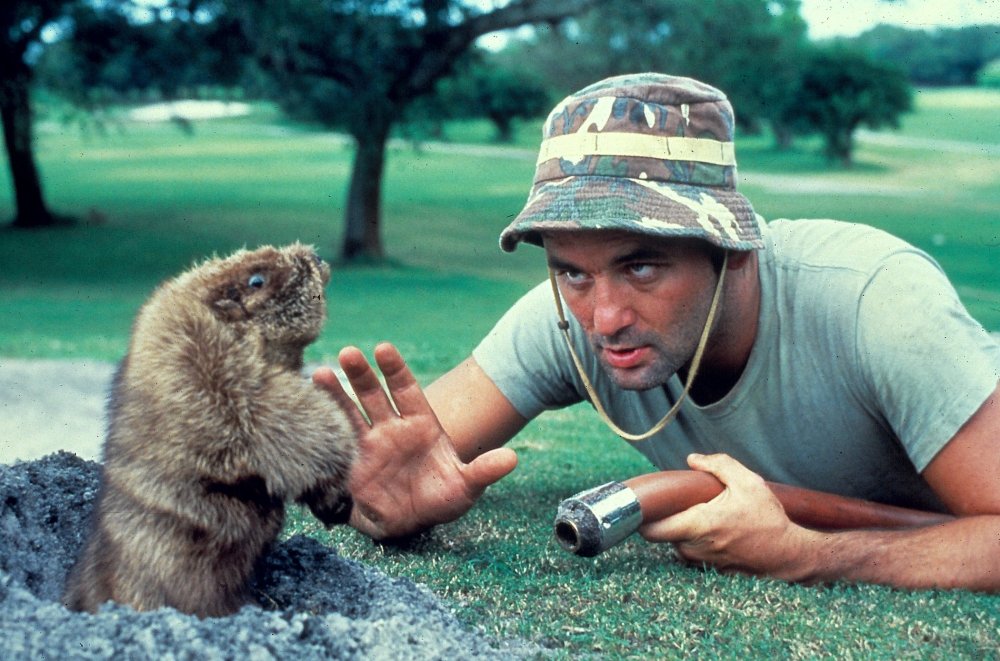
Caddyshack (1980)
Mixing vulgarity (sometimes prurience), anti-authoritarianism and a strain of goofy anarchism, Ramis’s early screenplays (Meatballs (1979), Caddyshack (1980), Stripes (1981)) influenced a future generation of filmmakers, most obviously Adam Sandler and Judd Apatow, who would go on to cast Ramis as Seth Rogen’s sympathetic dad in Knocked Up (2007) and produced the silly (d-)evolutionary burlesque Year One, with Michael Cera and Jack Black.
Ramis’s first films are also notable for establishing Bill Murray’s deadpan, cynical, wise-cracking slacker persona – part Groucho Marx, part Elliott Gould. After Belushi self-destructed it was Murray who would become the biggest star of the group, in large part because of the roles Ramis furnished him with – shaggy hipster-ironists always above the fray.
Murray’s smirky, insouciant Dr Peter Venkman in the smash hit special effects comedy Ghostbusters would cement this image in the popular imagination. While Ramis’s nerdy Egon Spengler functions as a fine straight man, he and co-writer Aykroyd conspired to channel all the funniest lines into their costar’s mouth. Directed by Ivan Reitman, Ghostbusters is an imperfect movie, tarnished by its knee-jerk Reaganite ideological underpinnings, but it’s a far more polished and energetic slice of cinematic spectacle than the gleefully slapdash efforts that preceded it.
By that time Ramis had also provided Chevy Chase with his biggest successes, Caddyshack and National Lampoon’s Vacation (1983) (his first two films as director). But attempts to play the star-maker for Robin Williams (Club Paradise came out a year before Good Morning, Vietnam), Rodney Dangerfield (Back to School, 1986) and Al Franken (Stuart Saves His Family) failed to compel audiences, for all the considerable talents involved.
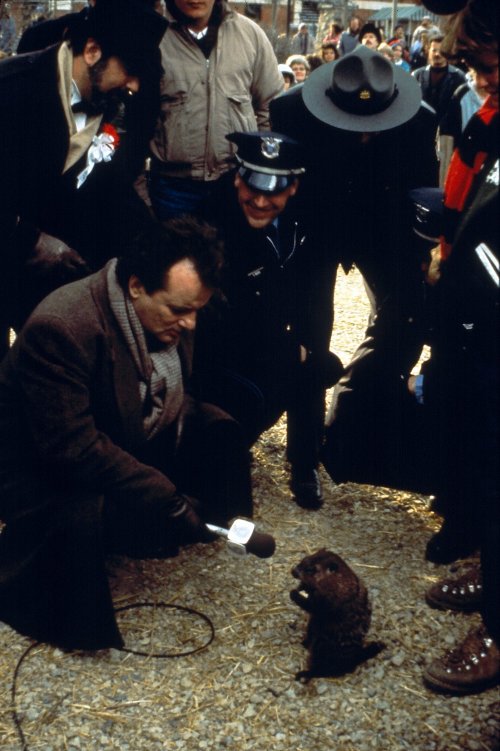
Groundhog Day (1993)
By far the most prolific and in-demand writer among the Second City / Saturday Night Live crowd, Ramis was stretched too thin in the late 80s – he has writing credits on no less than six features released between 1984 and 1989, several of them inferior sequels to earlier triumphs – but a four year hiatus after the mediocre Ghostbusters II (1989) would lead to the modern classic Groundhog Day. Danny Rubin’s conceit of a arrogant city weatherman cursed to relive a day in the sticks again and again is the ultimate midlife crisis comedy, an existential nightmare framed as a cruel joke on an egocentric Everyman.
This wasn’t the first movie to interrogate Murray’s jaundiced disaffection – Scrooged (1988) was a step in the same direction – but it’s the most searching, making a mockery of his smug condescension, but also allowing for change and growth even within the confines of endless patterns of repetition and futility. The hick town of Punxsutawney is a kind of Purgatory, but it’s a place where Murray learns that, contrary to Sartre, paradise is other people.
Ramis’s subsequent films as director showed similar ambitions to marry philosophy, psychology and fart jokes without hitting the same sweet spot. Stuart Saves His Family put Franken’s cable-access therapy guru through the wringer of family alcoholism, emotional abuse and penury (no wonder audiences weren’t buying), while in the underrated Multiplicity (1996), Michael Keaton’s overworked middle-class entrepreneur clones himself in an attempt to reconcile the work/life balance, a ploy that works quite well until his clone decides he needs quality time too, and clones himself… Analyze This (1999) (and its sequel, Analyze That (2002)) made mischief with the idea of a mafia boss on a psychiatrist’s couch, years before The Sopranos mined the same dynamic for drama.
But the best of these later movies is The Ice Harvest (2005), an accomplished crime thriller laced with a black comic edge, and yet another demonstration of Ramis’s bemused affection for (and identification with) the muddled, usually misguided manoeuvres of the middle-aged male in extremis.




